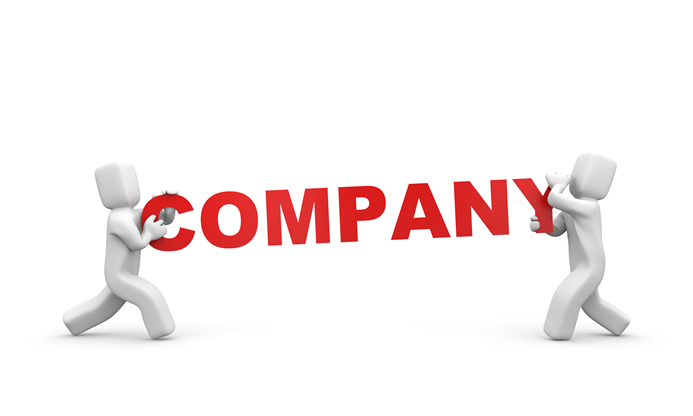What is wholly owned subsidiary?
If 100% of shareholding in a company is with another company, the former becomes a wholly owned subsidiary of the latter. Wholly owned subsidiaries are established to access multiple geographic regions, market areas, and industries. In addition, it helps create a hedge against macro changes like those in geopolitical or trade practice in a region or industrial sector.
A Wholly Owned Subsidiary generally has to produce financial results in a manner that can be merged with the parent financials. Tax and legal exemptions are often allowed to wholly owned subsidiaries. This stimulates investment in them. However, full control lies in the hands of acquiring company or the parent group.
Highlights
- In a wholly owned subsidiary, 100% of the ownership rights are with the parent company. There is no minority group of investors.
- It is often established to get operational access in multiple geographic regions, market areas, and industries and hedge against macro changes.
- Parent and wholly owned subsidiaries share each other’s markets, suppliers, customers, and financers. Even the goodwill of the parent group benefits the 100% subsidiary, whereas the parent can enjoy the tax benefits of having a wholly owned subsidiary.
Frequently Asked Questions (FAQ)-
How is a wholly owned subsidiary different?

Source: © Palto | Megapixl.com
Wholly owned subsidiary is an additional arm of an existing parent group. It is not treated as a separate individual firm as 100% of the ownership rights are with the parent company, unlike other subsidiaries with certain rights and freedom towards decision making and management. Wholly owned subsidiaries are not eligible to do so. It is the parent company that appoints management and employees. The parent company chooses to have direct control or not in the subsidiary operations. The wholly owned subsidiary company may continue as a separate entity rather than getting merged into the parent. Legal obligations are as per regulations applicable in the region of subsidiaries location.
Why do corporations go for 100% acquisition?
Many corporations prefer to own their subsidiaries fully. However, mostly a 100% acquisition by a parent company happens because of the following reasons:
- Parent group wishes to add on or get access to assets or liabilities.
- The acquirer needs to add on a new operating segment or takeover a particular division.
- Sometimes, 100% of subsidiaries are created to transfer liabilities and shield the parent company.
- It is the most preferred route for acquiring competitive businesses and operations.
- Enhancing tax efficiencies and benefits of tax reductions.
- Creating a strong presence in a new geography.
- Concentric and conglomerate expansions also stimulate such acquisitions.
How does the parent-subsidiary relation work?
The acquiring firm, also termed the parent company, owns the entire share capital of a wholly owned subsidiary, or acquired firm. Therefore, the existence of a minority stakeholder group is not possible.
The policies and procedures followed by the subsidiary must be streamlined with the parent group. Therefore, there is direct involvement of the parent in all significant decisions of the subsidiary.
When laws and regulations in territories separate subsidiary and parent companies, they will mostly have separate management groups and administrative setups. They will share each other’s products, markets, suppliers, customers, and financers. A 100% subsidiary can use even the goodwill of the parent group for its benefit.
Example-
Suppose XYZ Motors incorporates a subsidiary, XYZ Ltd., to provide end-to-end repairing and annual maintenance contracts (AMC) services along with fleet management services (FMS) for its newly launched range of electric vehicles. The new subsidiary XYZ Ltd. is incorporated as a wholly owned subsidiary under law. Now since XYZ holds 100 per cent shares in it, it can completely streamline policies and procedures. XYZ Motors can control decisions and provide strategic directives to ABC Ltd then.
Few real-life examples of fully owned subsidiaries of international conglomerate business groups are-
- The Kraft Heinz Company’s 100% owned subsidiary is Kraft Heinz Foods Company.
- Volkswagen AG, a fully owned subsidiary of the Volkswagen Group of America.
- BMW’s fully owned subsidiary company Rolls-Royce Motor Cars Limited is known for luxury and premium car variants.
- Walt Disney company’s 100 subsidiary Marvel Entertainment, famous for its comics and superhero films.
- HBO (Home Box Office) is fully owned by Warner Media Networks group.
What are the benefits & limitations of having a wholly owned subsidiary?
Benefits accrued are as follows-

Source: © Tashatuvango | Megapixl.com
- Easier to implement group policies and procedures as it is a 100% owned unit.
- Enhances group synergies, thus impacting overall group performance.
- Management can easily take the strategic decision which involves subsidiary as well.
- The subsidiary can reap the benefits of the parent group’s brand name since it is 100% merged.
- Valuation of a subsidiary increases as it becomes wholly-owned, as now it is recognised as a significant part of the parent group by investors.
- Streamlined and consolidated financial statements are prepared for the entire group.
- Market share of the parent company may increase by ultimately acquiring a competitor firm.
- It is easier to maintain customer and investors relations as a group entity in the market.
- Parent groups or subsidiary may get access to existing patents, rights, and connections.
Wholly owning a subsidiary may bring the following disincentives-
- The process of acquiring a subsidiary fully is time-consuming.
- The special expert team needs to be appointed for the due diligence of a firm before making it a wholly owned subsidiary.
- The parent company may become asset-heavy or absorb excess liabilities.
- Identifying good firms for merging them into an existing group is a challenging task.
- Existing related suppliers, bankers and investors, are to make aware of the operations of the subsidiary.
- A lot of legal formalities may be needed, which will be cost heavy for the parent company.
- Cultural differences do persist even if a subsidiary company is merged with a group.
 US
US AU
AU UK
UK CA
CA NZ
NZ IND
IND
 Please wait processing your request...
Please wait processing your request...